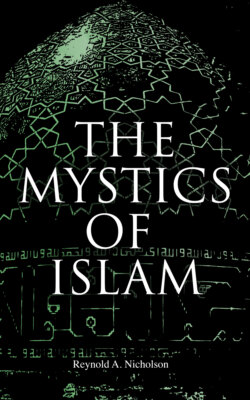Читать книгу The Mystics of Islam - Reynold A. Nicholson - Страница 6
II. Neoplatonism
ОглавлениеAristotle, not Plato, is the dominant figure in Moslem philosophy, and few Mohammedans are familiar with the name of Plotinus, who was more commonly called ‘the Greek Master’ (al-Sheykh al-Yaunānī). But since the Arabs gained their first knowledge of Aristotle from his Neoplatonist commentators, the system with which they became imbued was that of Porphyry and Proclus. Thus the so-called Theology of Aristotle, of which an Arabic version appeared in the ninth century, is actually a manual of Neoplatonism.
Another work of this school deserves particular notice: I mean the writings falsely attributed to Dionysius the Areopagite, the convert of St. Paul. The pseudo-Dionysius—he may have been a Syrian monk—names as his teacher a certain Hierotheus, whom Frothingham has identified with Stephen Bar Sudaili, a prominent Syrian gnostic and a contemporary of Jacob of Sarūj (451-521 A.D.). Dionysius quotes some fragments of erotic hymns by this Stephen, and a complete work, the Book of Hierotheus on the Hidden Mysteries of the Divinity, has come down to us in a unique manuscript which is now in the British Museum. The Dionysian writings, turned into Latin by John Scotus Erigena, founded medieval Christian mysticism in Western Europe. Their influence in the East was hardly less vital. They were translated from Greek into Syriac almost immediately on their appearance, and their doctrine was vigorously propagated by commentaries in the same tongue. “About 850 A.D. Dionysius was known from the Tigris to the Atlantic.”
Besides literary tradition, there were other channels by which the doctrines of emanation, illumination, gnosis, and ecstasy were transmitted, but enough has been said to convince the reader that Greek mystical ideas were in the air and easily accessible to the Moslem inhabitants of Western Asia and Egypt, where the Sūfī theosophy first took shape. One of those who bore the chief part in its development, Dhu ’l-Nūn the Egyptian, is described as a philosopher and alchemist—in other words, a student of Hellenistic science. When it is added that much of his speculation agrees with what we find, for example, in the writings of Dionysius, we are drawn irresistibly to the conclusion (which, as I have pointed out, is highly probable on general grounds) that Neoplatonism poured into Islam a large tincture of the same mystical element in which Christianity was already steeped.
